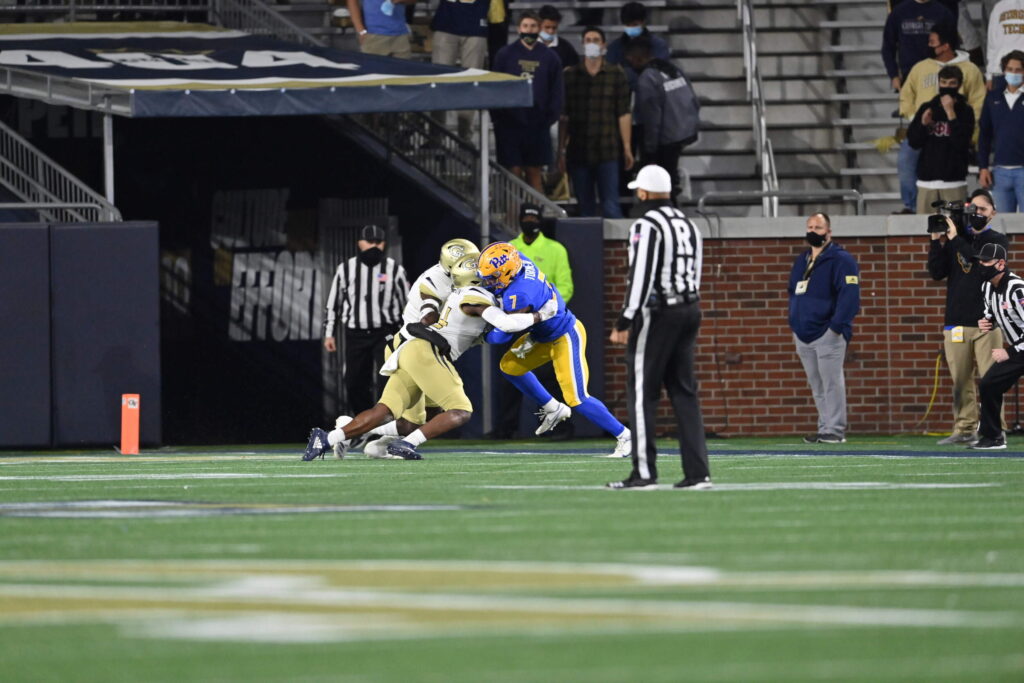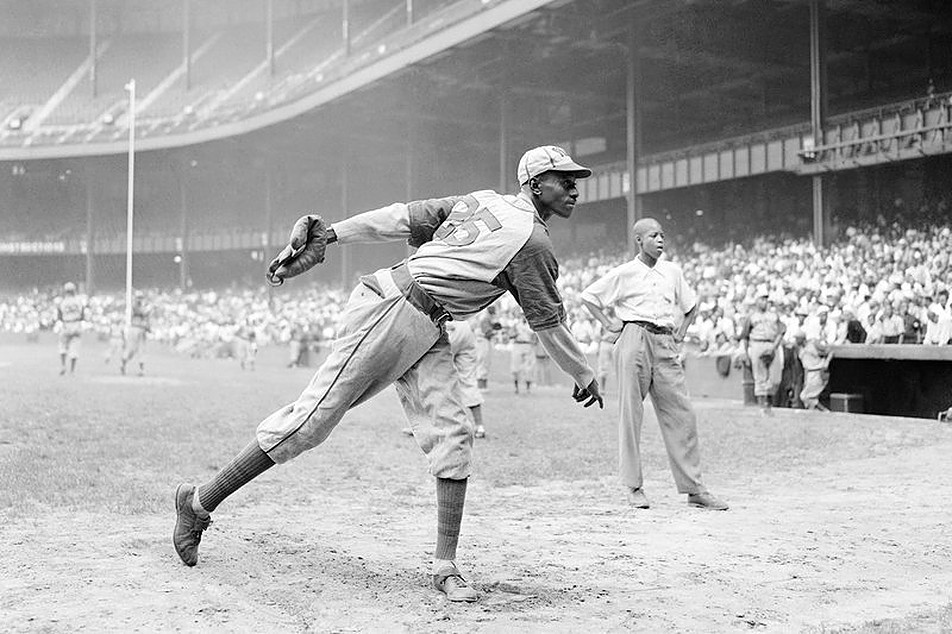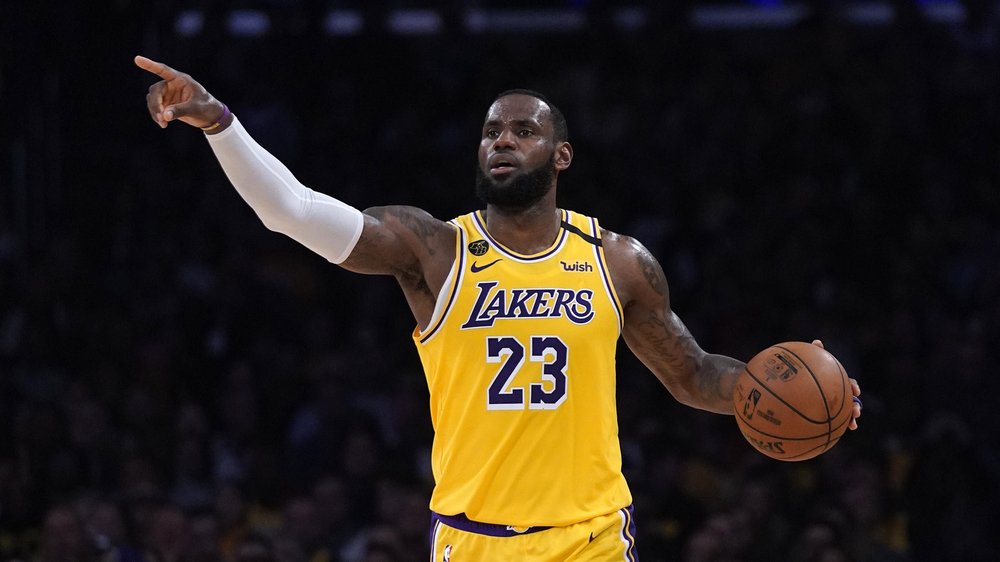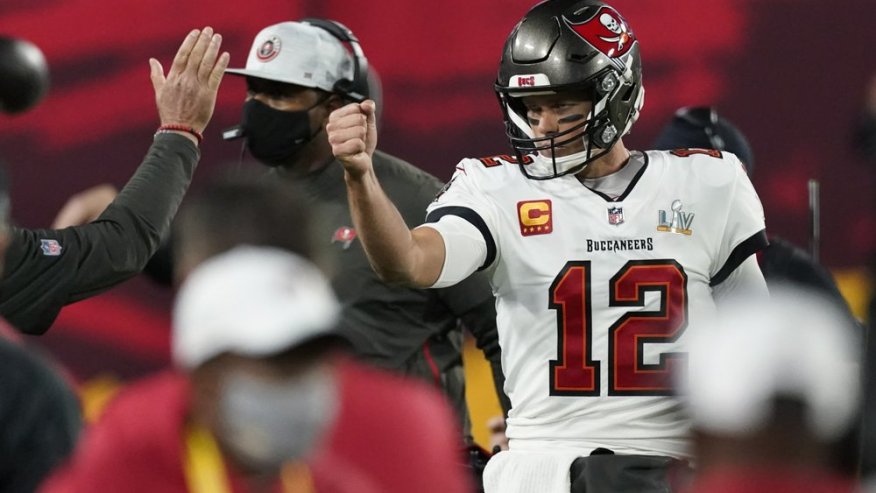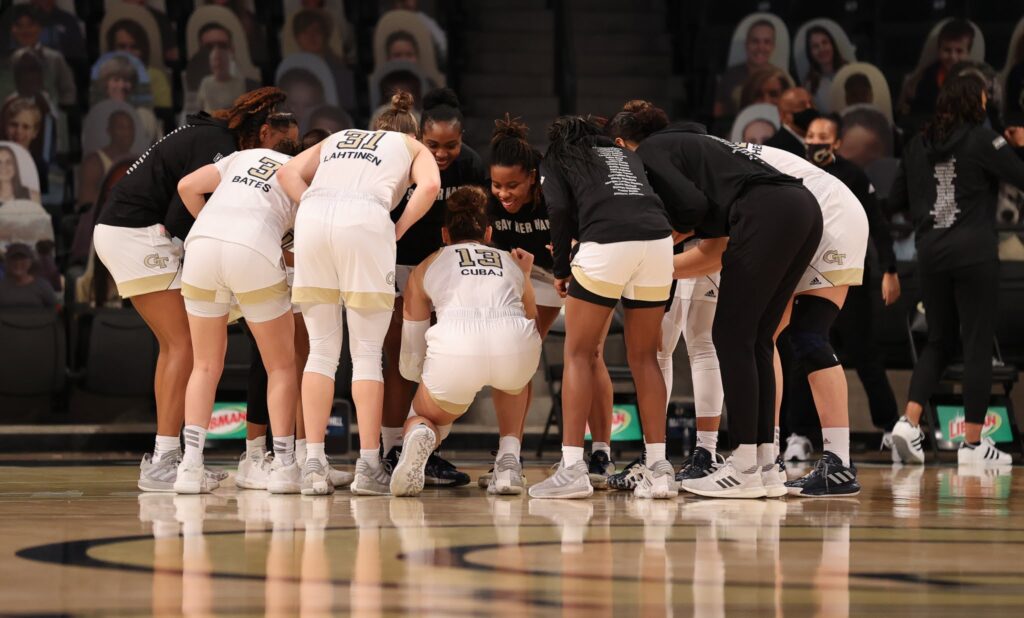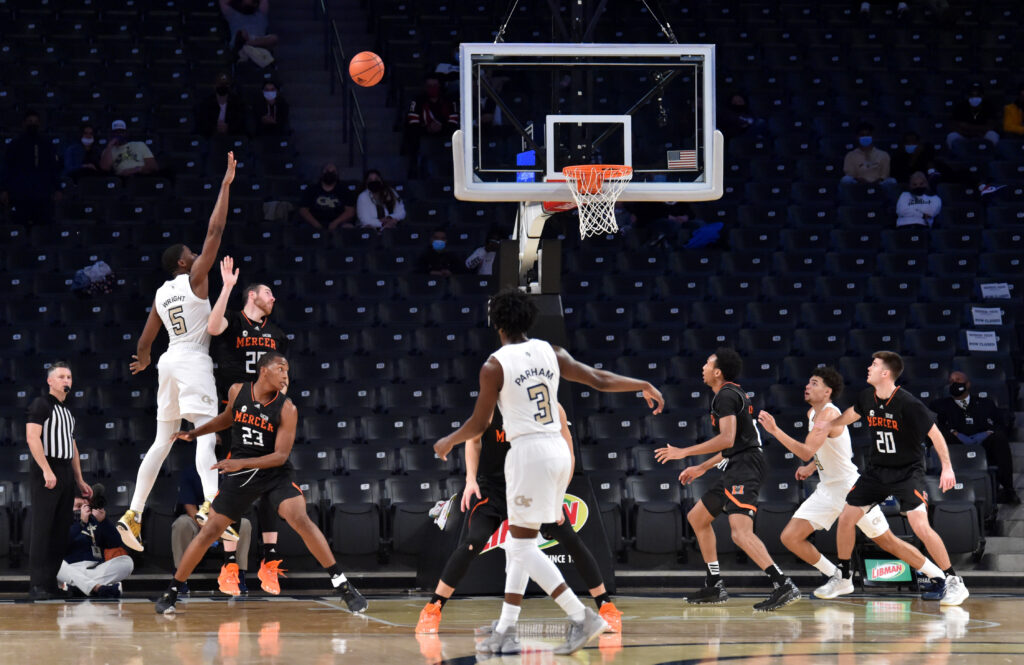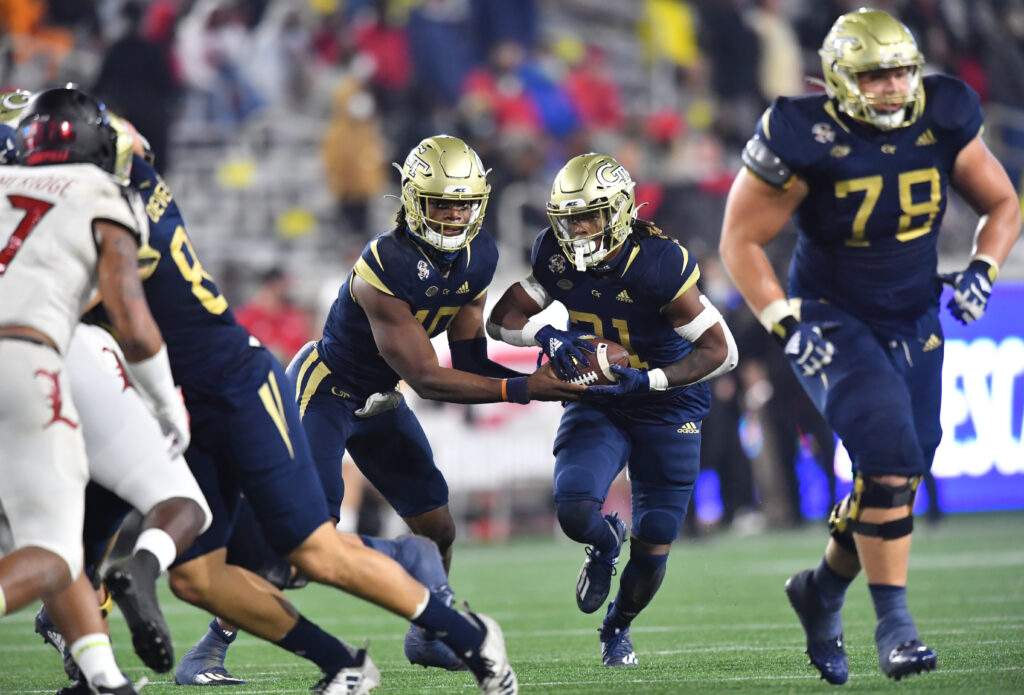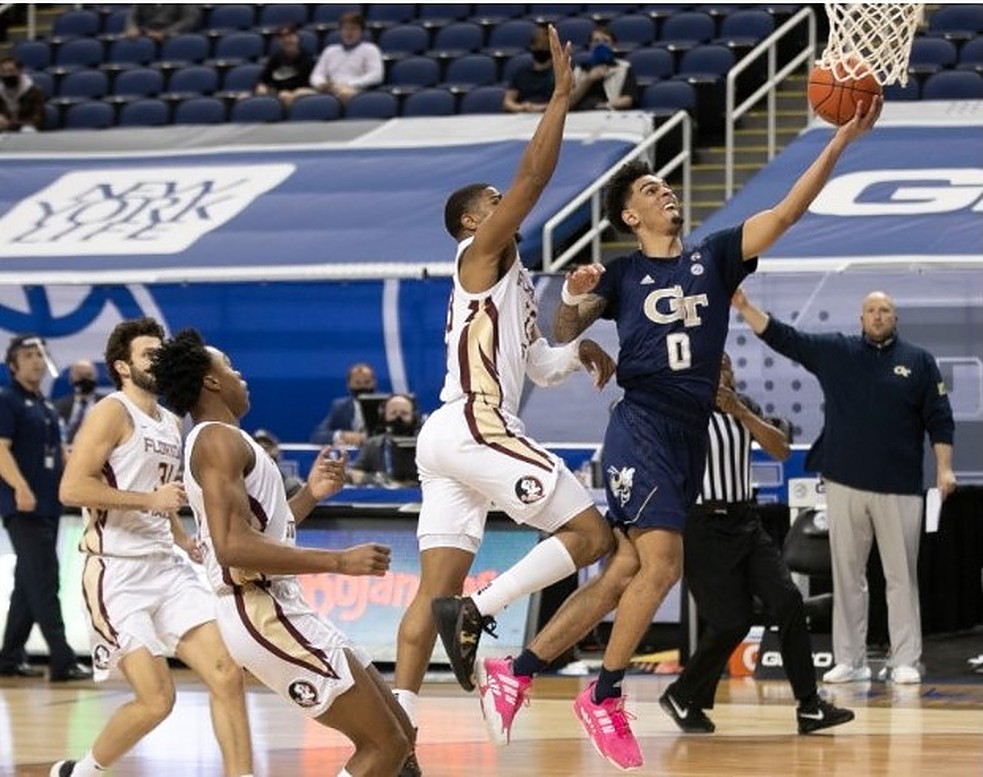
Wearing the freshly cut net like a necklace, Jose Alvarado celebrated Tech’s first ACC championship since 1993 with his coach and teammates after knocking off Florida State on March 13. An improbable run, aided by the usual weirdness of this COVID plagued season, landed the Jackets major hardware, starting the postseason with a bang.
Tech clinched a double-bye on the last day of the regular season when they leapfrogged Louisville for the four-seed of the ACC tournament following the Cardinals’ loss to top-seeded Virginia. They were able to rest their legs until the third day of the tournament, a large boon for a team that played three starters 34-plus minutes per game in the regular season.
After 13th-seeded Miami won back to back games over Pittsburgh and Clemson, the Hurricanes became Tech’s quarterfinals opponent for what would be Miami’s third game in as many days. Miami shot significantly better than Tech over the first half, though they did not make a single three-pointer and had more turnovers. Tech’s advantage in fast break points and points off turnovers kept the deficit at just four as Miami entered the half nursing a 33-29 lead.
Just before the half, Miami’s Isaiah Wong collided with Alvarado, sending the Tech guard to the floor holding his knee. After being helped to the locker room, he returned for the second half, avoiding what could have been a serious injury. Miami built a seven-point lead early in the second half, but two Tech runs helped the Jackets control momentum and take the lead during the second frame.
With the clock ticking down in the second half and Tech protecting a two-point lead, an errant pass on an inbound looked to be headed out of bounds for a turnover. Alvarado sprinted across the court just getting to the ball before it bounced out and eventually dished to Jordan Usher for a game-sealing jam as Tech beat Miami 70-66. Usher led Tech in scoring with 15 points, while Kameron McGusty led the Hurricanes with 25.
The season’s oddities continued the next day as a positive Covid test within the top-seeded Virginia program canceled the semifinal game and sent Tech directly to the ACC championship. Virginia had beaten Syracuse the day before on a buzzer-beating three.
After FSU handled North Carolina in the other semifinal, the Seminoles and Jackets faced off in the tournament final. Each team won on their home court in their two regular season games.
Tech again shot the ball at a lower rate than their opponent in the first half. Florida State shot 50 percent-plus overall and beyond the arc and made all four of their free throws while Tech shot under 40 percent and did not even record an attempt from the stripe. FSU was loose with the ball though, and Tech’s turnover-forcing prowess led to the Seminoles committing over a dozen turnovers in the first half, allowing Tech to take a 31-30 lead into halftime.
A 14-4 FSU run out of halftime turned the game on its head, but momentum swung back in Tech’s favor shortly after with a 13-2 run of their own. The Jackets would not trail again. A Jordan Usher dunk with under three minutes left gave Tech the energy to finish as they hit 12 of 13 free throws in the final minutes to hold the lead. Alvarado picked up his fifth steal of the night before assisting Michael Devoe for a game-sealing layup in the waning seconds, setting an ACC championship record with 15 team steals in the process.
Tech committed only seven turnovers to FSU’s 25, stunning the Seminoles defensively and holding them to twelve fewer field goal attempts over the course of the evening. It was the most turnovers the Seminoles committed all season, and the most they had committed since their loss in McCamish. Four of five starters scored in double figures and Alvarado played every second to lead the Jackets to the win.
Devoe was Tech’s leading scorer for the tournament with 33 points across two games, pacing the team with 20 in the title game. He secured tournament MVP honors for his effort, and was joined by Alvarado on the all-tournament first team, while Usher received a second team nod.
The team was emotional even before the final buzzer, coming onto the court and receiving a bench technical with 0.6 seconds left, allowing Florida State to set the final score at 80-76 after two free throws. When coach Josh Pastner was being interviewed pregame, he was joined by a visibly emotional Alvarado. When the interview turned to Alvarado, he expressed his gratitude, saying, “This is like a dream come true, and I’m proud of my guys. I love this win. This is gonna last me a lifetime.” He then turned to the stands and referenced his family, saying, “I got my daughter in the stands, I got my dad…I’m just so happy I get the chance to tell them I’m a champion, and I’ll bring a trophy home to Georgia Tech.”
The tournament win earned Tech an automatic bid to the NCAA Tournament as a conference champion, and they drew the nine-seed in the Midwest division. They play eight-seeded Loyola Chicago on Friday, March 19 at 4pm. The Ramblers recently gained fame when they went on a Cinderella run for a Final Four appearance, accompanied by then-98 year old nun Sister Jean. Tech will look to pick up their first tournament win since beating Oklahoma State in 2010.

